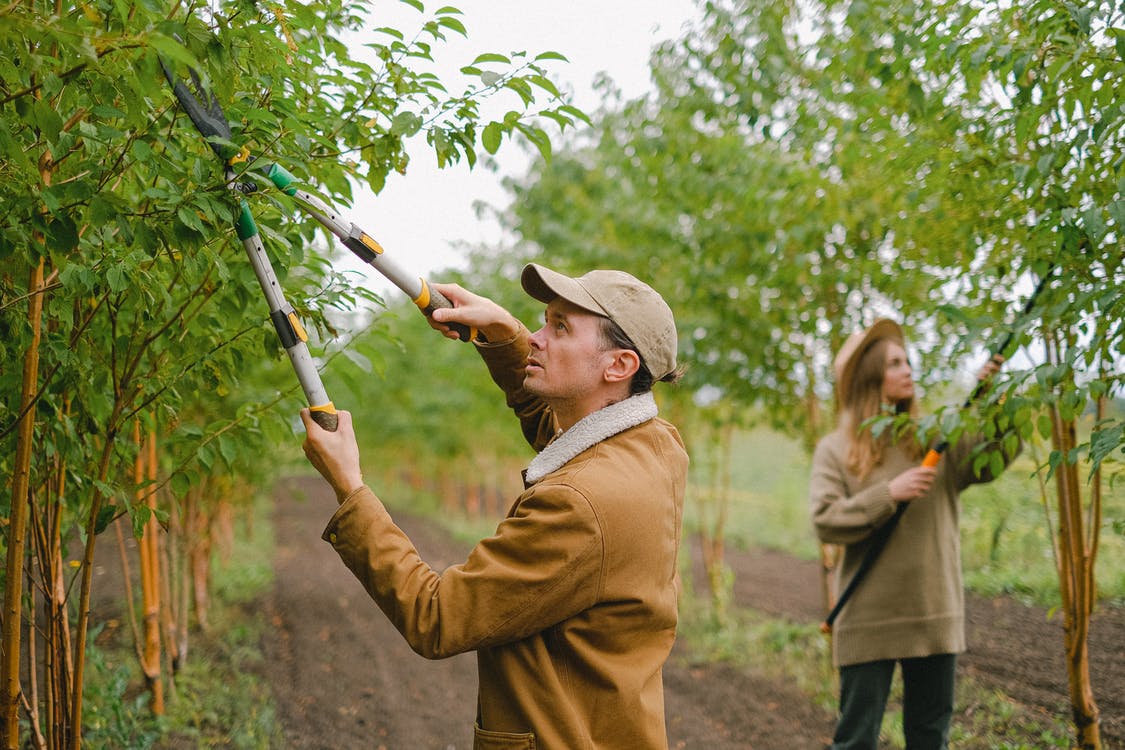1. It Encourages Tree Structure and Growth
Trimming the tree influences the way it grows. With proper trimming, the tree can grow into a specific configuration of branches and limbs that is perfect for the structural integrity of a tree. Maintaining a tree’s structure helps in mitigating the risk of falling branches and broken limbs. The properly trimmed tree won’t have improper weight distribution and compromising branch structures that might lead to disaster later in a tree’s life.
2. It Promotes Plant Health
Trimming removes dying and dead branches and stubs, which makes a way for new growth as well as protects your property and any passerby from damage. Additionally, it deters animal and pest
infestation and promotes a plant’s healthy growth and natural shape.
3. It Maintains Plants and Landscapes
Trimming trees encourages healthy flower and fruit production. Doing so regularly can keep your trees
proportioned and dense so it’s something you shouldn’t overlook.
4. It Protects You, Your Family, And Property
Regular trimming reduces the risk of storm damage to the structures from broken branches, which
means you, your family, and your friends won’t have to worry about any falling branches over walkways,
children’s play areas, and driveways.
5. It Helps You Detect Diseases Before They Advance
Trimming your trees regularly will help you discover any issues affecting them. Early detection will help you prevent a disease from spreading since you’ll have enough time to contact a tree doctor Salt Lake City and let them save the tree.
6. It Adds Value to the Property’s Environment
Untrimmed trees can make your property look unappealing and unkempt, while trimmed trees can boost the value of your property and the surrounding environment by adding beauty to them.
Types Of Trimming
There are several types of trimming, including topping, raising, thinning, and reduction that a professional like tree trimming Shawnee KS, would be skilled at. Each one is used for distinct purposes.
1. Topping
This is the drastic process that removes the vast majority of the branches down to a trunk. Topping is usually used when you’re training young trees to grow in specific ways.
2. Raising
This involves trimming the low-hanging branches in order to create headroom for parked cars, entryways, and pedestrians.
3. Thinning
This procedure removes the branch from its own point of origin. Thinning boosts growth and enhances light penetration.
4. Reduction
Reduction means trimming back the tree’s volume, usually for safety reasons, like creating space for power lines.
When to Prune your Trees
Keep in mind that any pruning (except emergency branch removal) should be done in late winter or fall, during a dormant season. It is during this time that a tree is the least susceptible to damage that may result from trimming. A tree is prone to stress like any other creature, and removing its branches can cause damage to it. However, when a tree is dormant, less sap is lost and since it’s dormant, fungus and insects are much less likely to further damage it. Some species of trees need different approaches for proper trimming. In case you’re in doubt and don’t know what to do, you should contact the certified arborist rather than risking both a tree’s safety and your own.
Make Sure Not to Overdo It
It is also important not to trim too much off of the tree. Generally, you should trim the smallest amount that achieves the desired result. Avoid trimming more than ¼ of a crown of a tree since this is where the majority of its leaves are located and where it gets a significant amount of its energy. You run a risk of fatally damaging a tree if you trim too much too quickly so make sure that doesn’t happen.
Final Thoughts
As you can see, trimming trees comes with a lot of benefits. However, it’s important not to overdo it to avoid damaging the trees. If you feel like you need help with it, you should contact the professional tree service, such as kzootreeservice.com in order to ensure things are done properly and safely.

